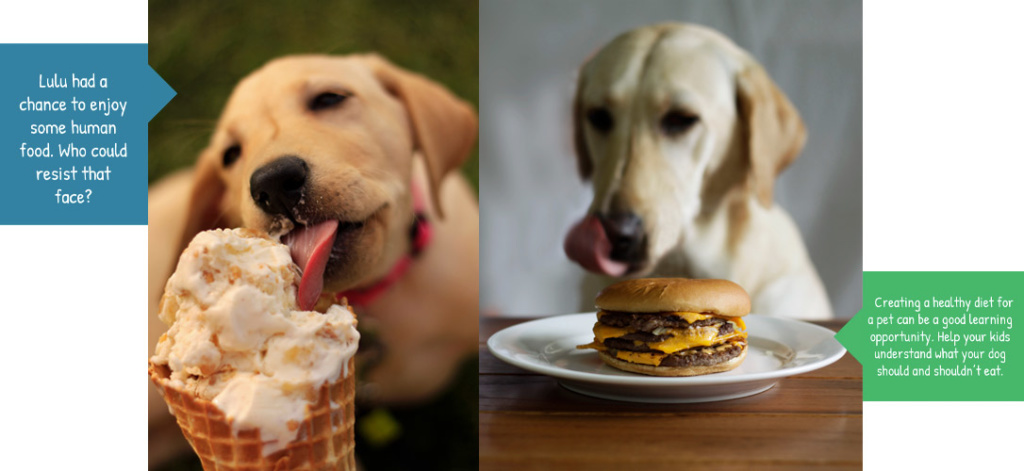Back when I was a veterinary technician, I often heard owners self-righteously proclaim, “I would never feed my dog that.”
Yet I discovered that the statement was often not the strict truth. It was uttered by owners-in-denial, shaking their head as they wiped Dorito crumbs from their dog’s mouth.
Of course, sneaking a little treat to one’s dog is not the worst thing in the world. It’s always done out of love. The dog enjoys a special snack while the owner gets to provide that moment of drooling bliss. Cue the panting tongues and wagging tails. In my experience, most dog owners justify this bit of indulgence by mentioning something worse they could be offering their pet.
“Well, I sometimes give Chopper pizza,” I recall one client saying, “but there aren’t any toppings on it.” Chopper was a rottweiler the size of a linebacker. He looked like he had eaten his share of sausage, plus just about anything else he wanted.
Despite the decade I spent working with animals, I am guilty of occasionally spoiling my pets. My dog, Lulu, can attest to this. By age 4, she had sampled everything from sushi to cheesecake to chicken marsala. And she had her growing belly as evidence of my laxity.
But she’s a Labrador retriever! “Labs need an extra layer to get them through the winter,” I’ll claim, as though Lulu is guiding a sled across Alaska rather than lying curled up on her bed in the living room.
I try to limit her consumption of people food—I really do. But it’s not easy. Dogs are driven by routine, and Lulu has me trained to understand that I don’t need to eat that last bite of burrito or lasagna. Also, her eyes always tell a different story than her waistline. She has perfected the sad, don’t-you-love-me stare, which is so easily misinterpreted as desperate hunger.
It also helps that I have a friend who feeds socks to her Doberman pinscher. Or, more accurately, her dog believes socks to be a delicacy and he will do anything to get his paws on them. After two sock-ectomy surgeries, the family has developed deep respect for the power of the hamper. And I have found a new defense for my own dog’s questionable diet.
“At least I’m not feeding Lulu socks,” I rationalize while tossing her some popcorn.
The dangers of your dog consuming hosiery should be obvious. Less apparent are the dangers of some human foods for dogs. I’m going to review a few items, since avoiding them could save you a vet bill large enough to push your family vacation back a year.
The most common one we hear about is chocolate. The compound theobromine in chocolate is poisonous to dogs, causing vomiting, diarrhea or worse. My sister’s Labradoodle once ate enough chocolate to put a Keebler elf in a coma, resulting in a stomach pump procedure. In the dog’s defense, it was Gertrude Hawk smidgens. I sometimes eat those with a shovel.
In general, if something seems indulgent for humans, it might be toxic to a dog. Definitely avoid coffee and alcohol, even if your dog claims all his friends are doing it. Ice cream seems harmless, but you might find out the messy way that your dog has a serious lactose intolerance. Even bacon is not advisable, as excessive fat can cause pancreatitis. Plus, a dog’s nose is 50 times more specialized than ours: Do they really need anything as savory as bacon?
Onions and garlic lead to anemia in dogs. Grapes and raisins can cause kidney failure. The artificial sweetener Xylitol, found in many “sugar-free” products, can dangerously affect your dog’s blood sugar level. The list goes on: avocado, cherry and peach pits, ibuprofen, chamomile, nutmeg, cinnamon.
Some taboo edibles for canines are the same items your own doctor would advise you to avoid. Anything with excessive salt or sugar is likely a bad idea. Also, avoid things like raw eggs, uncooked bread dough, straight baking powder, and bones (which can splinter). These might not sound appetizing to you, but your pup has a more adventurous palate, so keep them out of reach.
What treats can your dog eat? Generally, giving them cooked lean meats or eggs won’t be a problem. Veterinarians often prescribe a bland chicken and rice diet for dogs with digestive issues. Some fruits and vegetables are OK, like apples, bananas, carrot sticks, green beans and cucumber slices. My dog loves watermelon (make sure it is seedless). Corn is also allowed as it is a common ingredient in many dog food brands, but do not give them the cob.
Creating a healthy diet for a pet can be a good learning opportunity. Children are often the accomplice when a pet sneaks a treat, so help your kids understand what your dog should and shouldn’t eat. This teaches basic nurturing skills while also impressing upon them the importance of eating right.
I’m not suggesting that it is a guaranteed lesson, because I still haven’t entirely learned. At the grocery store, I look for more natural dog treats with pronounceable ingredients. And Lulu’s diet remains 100 percent sock-free. But I still smuggle her some contraband from my plate. A little extra pudge looks way cuter on her than it does on me.





